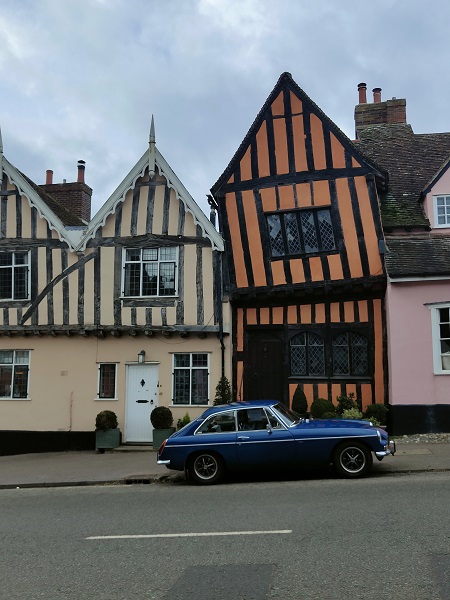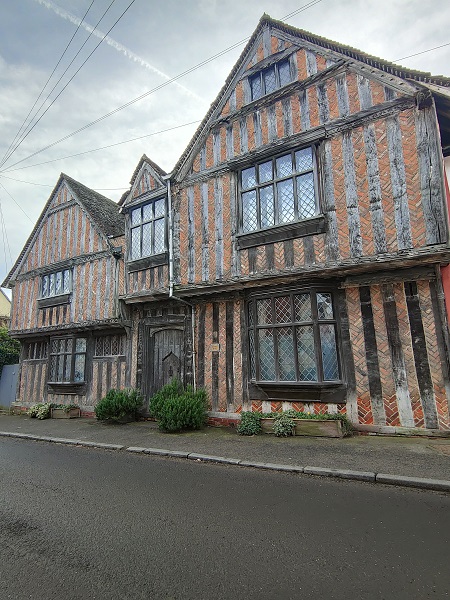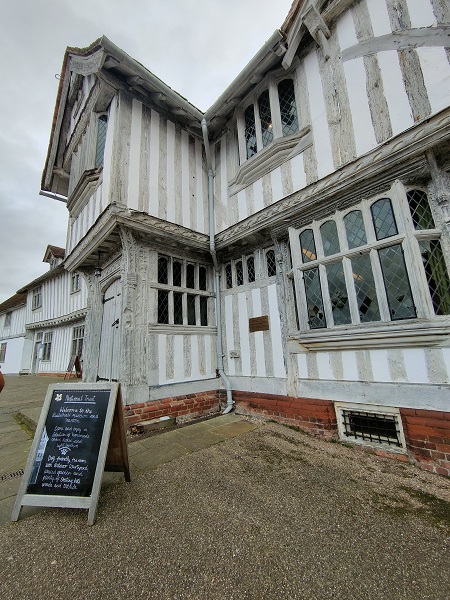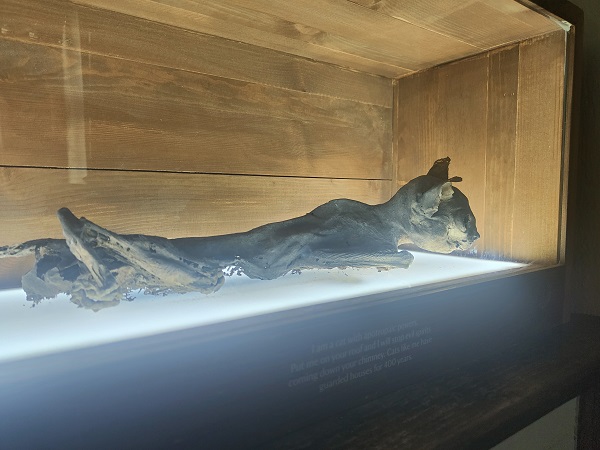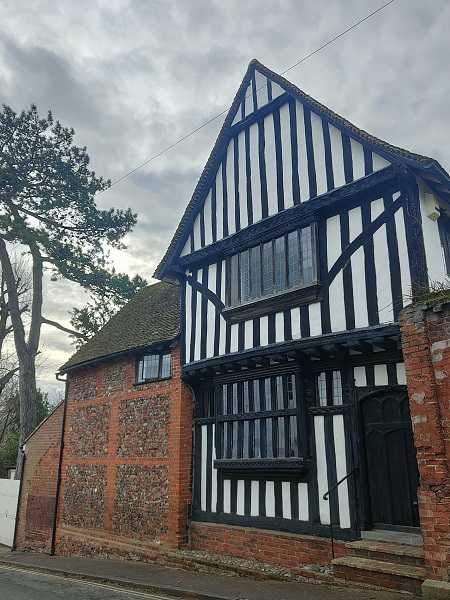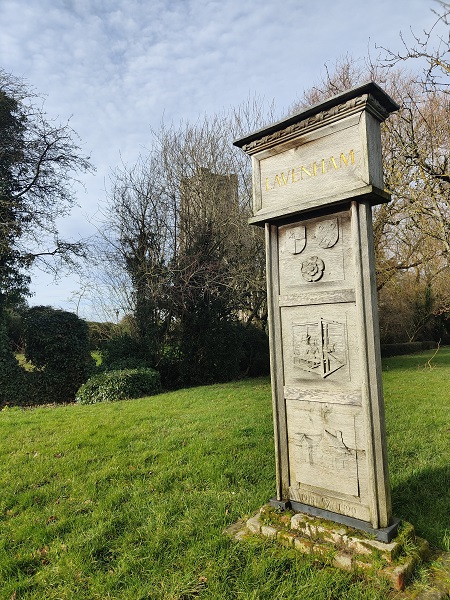The medieval wool town of Lavenham in Suffolk is particularly photogenic. With 321 listed buildings in total, its wonky half-timbered buildings make for a picture-perfect visit – and if you’re planning on heading over for a day trip, here are five things you shouldn’t miss.
1. The Crooked House
When you see this jauntily-angled orange building, you’ll be unsurprised to learn that it’s one of the most photographed houses in the country. The Crooked House, which dates back to 1395, once formed part of a wealthy merchant’s grand hall house. It’s also said to be the inspiration behind the famous nursery rhyme, “There was a crooked man”.
Now you can not only take photos of the outside, you can also book tours, black tie dinners, private hire events and more.
2. Harry Potter filming locations
In January 2010, Lavenham was secretly used as a filming location for a major production. Do you recognise the house above?
Does the name “Godric’s Hollow” ring any bells?
That’s right: Lavenham was used as the basis for the wizarding village in Harry Potter and the Deathly Hallows Part 1. The crew filmed parts of the town and used CGI to alter the buildings’ appearances. The actors themselves never set foot in Lavenham!
3. The Guildhall (including Rameses)
The National Trust took on ownership of the Grade I listed Guildhall in 1951. It’s a great stopping point if you want to hear more about the stories of the people who’ve lived in Lavenham over the centuries – including its wool trade, of course. There’s plenty to keep kids entertained, from different types of wool to handle to the dye garden outdoors.
If you like things a little more gruesome, head to the far side of the first room you’ll enter once you’ve paid. On the left, past the large fireplace, there’s a box covered with a cloth. Lift that cloth to reveal the mummified cat (his name’s Rameses) who was found in the roof of one of the nearby houses. It’s said that walling up cats when building houses brought good luck and warded off evil…
4. The best-preserved house in Lavenham
Just look at that cottage – isn’t it beautiful? This is Molet House, which you’ll find on Barn Street.
Grade I listed and built sometime around 1530, it’s often described as one of the town’s best-preserved houses. A wealthy merchant was likely the original owner and it’s had some famous visitors over the years. Inside, there’s an engraved slab that commemorates the fact that Queen Elizabeth I slept in this very property on March 24th, 1586.
5. Carvings and symbols that tell a story
Look closely as you wander around Lavenham. On various buildings you’ll see all sorts of symbols – and they’re not just decorative.
The wooden village sign that stands just outside Lavenham Church has a few of these. It only dates back to 1990 but features a timbered building and a weaver’s loom, as well as two heraldic shields and a Tudor Rose.
Head to the church porch and you’ll find another Tudor Rose: Henry VII created the symbol to unite the House of York and the House of Lancaster after the War of the Roses. John De Vere, lord of the manor of Lavenham, helped Henry VII to defeat Richard III – and was richly rewarded as a result.
He used some of these funds to develop the church – and wanted everyone to know that this was his work. That’s why you’ll see a star symbol – one of De Vere’s symbols – repeated on the tower, plus two wild boars (another of his signs) above the door.
There’s a crozier (possibly linked to St Blaise, the patron saint of wool combers) and a fleur de lys (representing foreign weavers that came to Lavenham) on the outside of The Swan. You’ll find De Vere’s star and boar carvings on De Vere House. Call me geeky, but I love little details like this: details that reveal more than you’d expect about a place’s history!
If you’re interested in visiting Lavenham, the Love Lavenham website has great info on places to visit, shop, eat, drink and stay: click here to learn more!
